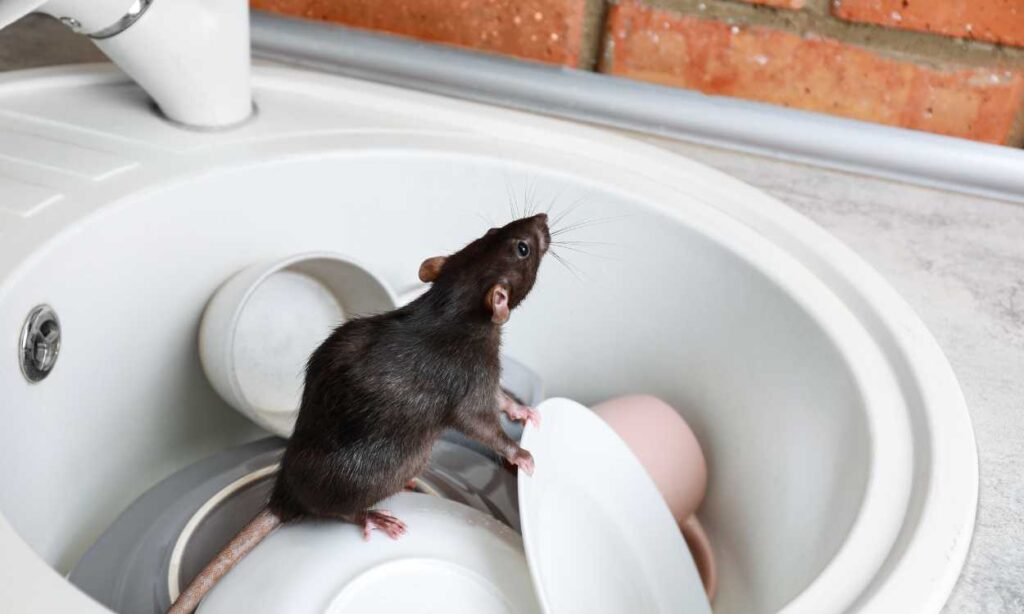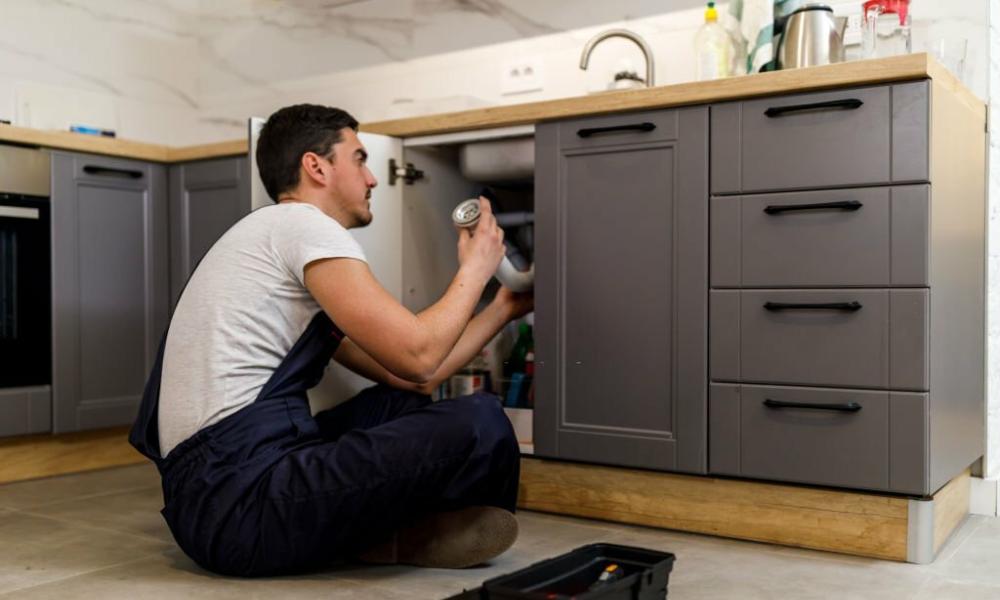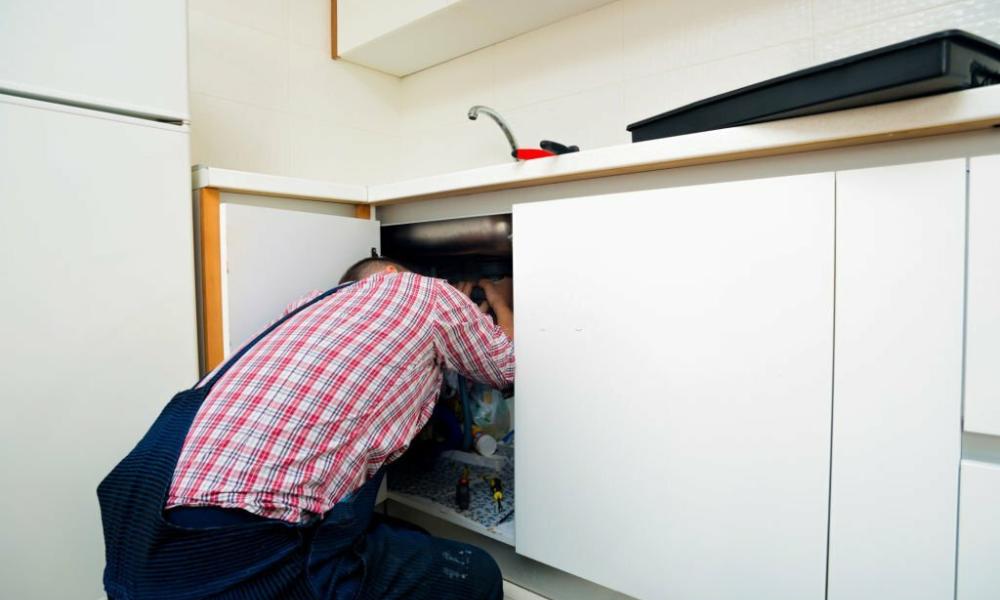Battling to get rid of mice under your kitchen sink can feel like a never-ending war. These unwelcome guests find the warmth and food scraps in this area irresistible. However, with the right strategy, you can reclaim your space. This guide will walk you through effective, humane methods to deter these pesky rodents. From sealing entry points to employing natural repellents, we’ll help you create a mouse-free zone. Say goodbye to the sound of scurrying feet under your sink and hello to a peaceful, hygienic kitchen.
Signs of Mice Under Your Kitchen Sink
Before jumping into how to get rid of Mice Under the Kitchen Sink these unwelcome guests, you need to confirm their presence. Mice are nocturnal creatures and are most often spotted during the night. Look out for these signs:
- Droppings: One of the most common and obvious signs of mice is their droppings. Fresh droppings are shiny and putty-like in texture. They will become hard and dull over time.
- Urine Odor: Mice use urine to communicate and mark their territory, so a strong ammonia smell can indicate their presence.
- Chewed Items: Mice have a constant need to gnaw and will chew almost anything, including cables and pipes, which can be a fire or structural hazard.
- Nests: Mice tend to nest in warm, secluded areas. They can use shredded paper, fabric, or insulation materials to make their nests.
- Sounds: Mice are often heard running behind walls or under cabinets, particularly at night.
Step-by-Step Mouse Eradication Plan
Ok, so you’ve confirmed mice are lurking below your kitchen sink. It’s time to take action. Here’s a step-by-step plan to eliminate them and prevent them from returning.
1. Identify Entry Points
Seal all possible entry points. Even the smallest hole can be an open invitation for a mouse. Common entry points under a sink include gaps around pipes, spaces in the wall or floor, and even small holes at the back, used for drainage or as access routes for pipes. These can be sealed with steel wool, caulk, or foam insulation. Remember, mice can squeeze through openings as small as a dime!
Securing the Perimeter
Start your inspection by taking out the items from under the sink. Check the box below, using a flashlight if needed, and look for signs of their entry such as chewed wood or wires. Once identified, use the appropriate material to permanently close these gaps and reinforce boundaries.
2. Clean and Remove Food Sources
Mice are always in search of a meal, and your kitchen offers a smorgasbord. Wipe down countertops to eliminate food crumbs, and secure all food in airtight containers. If you’re storing any food under the sink, make sure it’s properly sealed. Remember, a mouse can fit through incredibly tight spaces, so even small crumbs are a feast!
Organization is Key
Reorganize the items you keep under the sink. Store all items that do not need to be easily accessible in plastic or glass containers with tightly sealed lids. This not only eliminates food sources for mice but also makes it easier to spot and clean up any droppings.
3. Set Traps
Use a combination of humane and lethal traps. Humane traps are useful for catching and releasing mice away from your home. Lethal snap traps, while effective, need to be used with caution, especially if you have pets or small children. Bait traps with a mouse’s favorite food – peanut butter and chocolate are excellent choices.
Positioning Your Traps
Traps should be placed parallel to the wall where you’ve seen the most activity, with the bait side closer to the wall. Check and re-bait traps regularly.
4. Poison Baits (With Care)
Poison baits are an option, but they come with risks, especially if you have pets or children. Place baits in enclosed, tamper-resistant bait stations, secured in areas inaccessible to pets and children, and be prepared for the possibility of mice dying inside your walls.
Less Lethal Alternatives
If you’re uncomfortable with poison, there are natural deterrents you can use such as essential oils, peppermint sachets, or even ultrasonic devices.
5. Keep Things Clean
Maintain a pristine kitchen. Alongside storing food properly, regular cleaning is vital. Sweep and vacuum frequently. Pay extra attention to areas like behind and beneath the stove and refrigerator, where crumbs often accumulate.
The Weekly Schedule
Design a cleaning schedule that includes wiping down all surfaces, mopping floors, and inspecting areas that are prone to messes. This regular upkeep makes your kitchen less appealing to mice.
6. Monitor and Maintain
Once the initial infestation is under control, continue to monitor the situation. Inspect the area under your sink periodically for any new activity and maintain all the preventive measures mentioned. Remember, an ounce of prevention is worth a pound of cure.
Consistency is Key
Stay vigilant. Mice are persistent and can find their way into your home from the most unexpected places. By keeping up with regular inspections and maintenance, you can keep them at bay.
Prevention: How to Keep Mice Away for Good
Dealing with rid of mice under the kitchen sink can be a troubling experience. These small, unwelcome visitors are not only a nuisance but can also pose significant health risks by spreading bacteria and potentially causing damage to your home. To effectively rid your kitchen of mice and ensure they don’t return, a combination of immediate action and preventive strategies is essential.
1. Keep the Perimeter Secure
Check your property’s exterior regularly for potential entry points. Fill in any gaps or holes that could be used as an entryway. Remember, mice are excellent climbers, so look high and low, both inside and outside of your home.
2. Landscaping and Maintenance
Mice are sneaky and can hide out in tall grass or overgrown shrubbery near your home. Keep your yard well-maintained by trimming back any bushes and trees, and don’t let clutter accumulate around your house.
3. Store Smart
Store items off the ground and away from walls, especially in basements or areas known to be frequented by mice. Shelving units can help keep items organized and off the floor, making it more difficult for mice to get to them.
The Elevated Approach
Use sturdy containers for storage and place them on shelves high above the ground to block access to their contents.
4. Create a Repellent Barrier
Use repellents, both natural and store-bought, to create a barrier that deters mice from entering your home. Remember, what smells good to us might repel a mouse. Peppermint oil, dryer sheets, and cayenne pepper are all known to be effective repellents.
5. Good Habits
Adopt good habits that will help keep your home rodent-free. Simple actions like not leaving dirty dishes in the sink overnight, taking out the garbage regularly, and sealing entry points are all part of a good prevention plan.
Conclusion
Getting rid of mice under your kitchen sink is not just about setting a couple of traps and calling it a day. It’s a comprehensive approach that involves identification, eradication, and prevention. By being thorough and consistent, you can reclaim your kitchen from these pesky pests, ensuring a healthier and safer home for you and your family.
Remember, if the problem seems persistent or overwhelming, don’t hesitate to call in professional help. They can provide more targeted solutions based on the unique circumstances of your home. With these detailed steps and a proactive mindset, you can enjoy a mouse-free kitchen once again.




